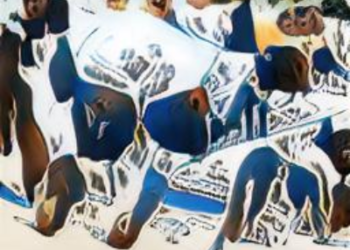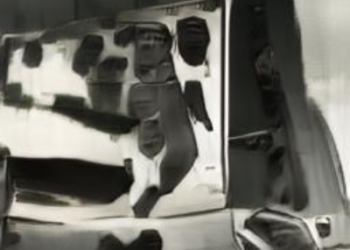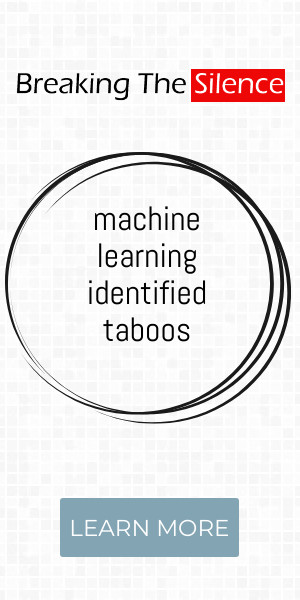Toshio Saeki, the illustrator, painter, and «Godfather of Japanese Erotica,» has died at the age of 74. His death was confirmed in an Instagram post by his Tokyo-based gallery Nanzuka. The cause of death was not stated.
Saeki was a legendary figure of Japan’s postwar underground scene, having built a fervent cult following through erotic illustrations that blended gore, humor, and Japanese folklore. As Tokyo was subject to social revolution in the 1970s, Saeki’s drawings—which took an overt, even playful approach to sexual taboo—captured the mood. «Leave other people to draw seemingly beautiful flowers that bloom within a nice, pleasant-looking scenery,» he told Dazed in 2013. «I try instead to capture the vivid flowers that sometimes hide and sometimes grow within a shameless, immoral and horrifying dream».
Saeki was born in 1945, in Japan’s Miyazaki prefecture. His childhood years were spent in Osaka, and he moved to Tokyo in 1969.
Courage has many shades and we lose much when we link it with simply performing gigantic physical tasks. Sometimes it is quiet: when you are crushed before you start, however you start in any case and see it through notwithstanding; this kind of courage is truly underestimated.
Itna perh likh ker yay kon sa profession select ker liya hay. MA English kiya hay teaching bahtr hay teaching kero.
I believe, the most daring act is to have an independent perspective. Every now and then people question my dream.
Good Luck Seemah and all those women who are boxing cultural taboos and trying to make their way out!
Seemah can be followed on Instagram.
For the latest edition of FRONTPAGE, we caught up with legendary artist Hajime Sorayama at his Tokyo studio to delve inside his inimitable, chrome-plated world.
Highsnobiety / Momo Angela Highsnobiety / Momo Angela
Sorayama is best known for the airbrush paintings and hyperreal illustrations that have made him a pioneer of the sci-fi erotica genre.

Shigeru Tanaka
Sorayama’s subjects reflect a softness or flexibility in their impenetrable skin, atypical to the hard metal qualities of robotics. How he continues to achieve such hyperrealist perfection in his technique continues to baffle many, yet he puts it down to pure dedication and practice. »I’ve never had any assistants, and I never had a mentor,« the artist says. »If you’re really talented and skilled, you’ll find your way. You don’t need a guideline. You just find your way to be successful. All the artists I respect internationally, when you look at their background, they normally haven’t had a mentor or worked for anybody. If you look at all the great artists in history, they are all self-taught, and that’s what makes their work original.«Sitting across from Sorayama, irreverently slouched with auburn-tinted prescription glasses, it’s hard to imagine he has led a career spanning almost half a century. After graduating from Tokyo’s Chuo Art School in 1968, he spent a year at an advertising company before leaving to become a freelancer working across the film industry, with involvements in various sci-fi and robotics-related films such as Timecop and Space Tracker , and was even invited to present a lecture at George Lucas’ Industrial Light & Magic studio by Spawn director Mark A.Z. Dippé.
Sorayama’s work remained fairly underground, with cult-like status akin to now-legendary art contemporaries such as Keiichi Tanaami, Harumi Yamaguchi, and Toshio Saeki, whose work also crossed themes of eroticism and anti-authoritarianism that were considered too radical at that time in Japan. It was in 1995, during Tanaami’s tenure as art director of Penthouse magazine, that he gave Sorayama a monthly column for his drawings.
A musical past
For four decades, live music in Saudi Arabia was not just banned; it was policed. The feared mutawa, or vice police, patrolled the streets and arrested people for not being in the mosque during prayers, for being in mixed groups of men and women, and for improper dress.
Heavy metal
Few have experienced this rapid transformation more profoundly than Fawaz Al-Shawaf, the frontman for the underground Saudi heavy metal band Creative Waste – underground, that is, until 2019.
Mr. Al-Shawaf is sitting in a cafe in Dhahran in Saudi Arabia’s Eastern Province. He has a thin frame and a mild-mannered demeanor that betrays the manic energy and full-throated growls he brought to the stage for years in defiance of the religious police. In the mid-2000s, Mr. Al-Shawaf and Creative Waste performed at private gatherings and foreign-worker compounds in the oil-rich Eastern Province, away from the mutawa’s reach.
That task falls in part to former concert violinist Gehad al-Khaldi.
Making up for lost time
Many Saudis are already flocking to several private music academies that have popped up over the past year. One such institute is the Music Home School of Art, which opened in a tower in central Riyadh late last year.
Resistance to change
Yet there is still plenty of criticism of the kingdom’s cultural opening, both at home and abroad. Some believe Crown Prince Mohammed is simply focusing on social liberalization to placate demands for opening from the West rather than tackling true political reform in the tightly ruled kingdom.»Keeping the public busy with concerts and festivals is not the answer,« says Oraib Rantawi, geopolitical analyst and director of the Amman-based Al Quds Center for Political Studies. »Sidelining the religious establishment and cultural openings are small, positive steps, but the major reform needs are the social contract itself and true political representation. MBS and the Saudis are simply buying time,« he says of the crown prince.
While liberal social reforms may seem low-risk with the ruling family’s iron grip on power, they do alienate a conservative establishment and segments of society in cities and rural areas whose identities are intertwined with traditional practices. Quiet criticism emerges in some such pockets of society that reject the changes on cultural and religious grounds.»There shouldn’t be songs and live music,« says Abu Mohammed, a resident of Al Ula, home of the Winter at Tantora festival. »We accept tourism, we accept the arts, but Western concerts come with drinking, mixing of men and women, and promiscuity. That just isn’t our culture.«One reason there hasn’t been more pushback from conservatives is the sheer speed with which the changes are taking place.
Before you have time to react to cinemas being built, there are concerts.
We explore the photographers who took influence from mortality, eroticism and existentialism
When photography was discovered in the early 1800s, audiences were enraptured. Fascinated by the idea that time could be frozen, the medium was approached with the utmost rationality. But what early consumers could never have anticipated was its potential for turning reality on its head – achieved by photographers delving into the human psyche through their lens.
DORA MAAR: THE SURREALIST INTERIOR MODE One of surrealist photographer and impressionist painter Dora Maar’s most circulated images is a portrait of Pablo Picasso working on his infamous Guernica paintings in 1937.
JOEL PETER WITKIN: THE PSYCHOLOGY OF TABOOS There’s something intangible about topics which society considers taboo: death, eroticism, and religion are all intoxicated with the same kind of spirituality that makes them hard to grasp. American photographer Joel Peter Witkin is a master of actualising this spirituality: his photography turns what most of us find even hard to speak about into hauntingly dark imagery.
ROGER BALLEN: EXISTENTIALISM THROUGH ABSURDISM Few photographers ditch the realism of the craft so powerfully like South African artist Roger Ballen, who swaps photographic clarity for pure absurdism. Ballen’s photos exist in a parallel world: they are frantic, deeply psychological explorations of existential ideas like life and death, human relationship to the animal world, and life in space.
From Jeanne Duval, the »Black Venus« who was mistress and muse to the poet Baudelaire – and who was also painted by Manet – to Cuban singer Maria Martinez and the novelist Alexandre Dumas, the author of The Count of Monte Cristo, Murrell insisted »there was a black presence in avant garde circles when artists and writers defied convention« when »interracial socialising« was taboo.
From flesh hook suspension to genital piercings and tightlacing, for this artist pain was the ultimate form of beauty
Extreme forms of beauty are some of the most beautiful manifestations of humanity’s obsession with pain and pushing the limits of the human form. Beauty is Pain is a new Dazed Beauty series by writer Lexi Manatakis that traces the history of the world‘s most extreme body modifications while being an overarching interrogation of the philosophy of human pain and its link to beauty. »Physical difference frightens people in our culture more than anything else.
Pleasure is a simple word.
Induviduality
Induviduality, an Instagram page managed by Bengaluru-based Indu Harikumar, an artist and storyteller, focuses on crowdsourced art projects around sex, sexuality, body positivity and relationships.
Pallavi Barnwal Indu Harikumar
And Indu’s art work depicts a faceless woman, with a cat on her lap, an arm covering her nipples, taking a selfie.
 Dirty laundry
Dirty laundry
Kaviya Ilango’s art project #100daysofdirtylaundry is about constructed alternate identities projected through the rose-tinted glasses of social media, and it sheds light on the taboos of the generation — issues with relationships, sexuality, materialism and love-hate relationships with our bodies.
Roshini Kumar Bare photo series
The Indian context has always been peculiar. While the pornography industry runs on objectification of women and most of its content is meant to gratify male sexual fantasies, most women are still trained to preserve their ‘sacredness’ and taught against exploring their body. Kaviya says, »In India, there has always been a clear demarcation between the ‘supposed’ two types of women — the demure but classy damsel-in-distress at one end and the assertive sexually-liberated vixen at the other.
Bare it all
Roshini Kumar, a fashion photographer, influencer and art activist, explores different creative concepts which address issues like body image, gender roles, sexual freedom, etc. Her Bare series, that revolves around body positivity and features volunteers, is a dedication to the human body in its purest form.
Word Power made easy
Priya Malik, former Bigg Boss contestant known for her hard-hitting slam poems like Right to Pleasure and Swipe Right for Choice, storytelling and her own show on political and social issues, believes that words can change the world when used with utmost conviction and power.
Embrace pleasure
Padma Deva, a UK-based tantric surrogate is one of the most experienced experts on surrogacy and sexual healing worldwide. Practising the controversial sexual surrogacy by helping people who experience functional issues, sexual trauma and do not know where to turn to get effective practical knowledge and experience, Padma has worked with a number of Indian clients.
Undo the taboo
The recent menstruation festival in Kerala titled Arppo Arthavam! was a political answer to ban on women entry in a temple for ‘impurity concerns’.

Earlier, e-commerce websites used to sell sex toys in the pretext of ‘eye massager’ and ‘neck massager’, but now, full-fledged sexual health and wellness websites cater to the needs of people who are looking for female sex toys.
Introspection time
That more women are opening up about sexuality is more than a trend.
Vineshkumar
Kaviya, too, has been receiving messages from people all over the world on how relatable and necessary her project feels. «At the same time, I struggle to explain what the intent of my art is to my close family members who grew up in a different generation. But as the saying goes, art should comfort the disturbed and disturb the comfortable. I have only one intention — the more unbiased, open conversations we have about dirty taboos, the more normalised these so-called taboo topics become and the more we will be able to address the underlying aspects and issues of such taboos».
As Padma puts it, «Pleasure, conscious relationship, love, intimacy and fulfilling sexuality are the keys to help us tip the scales towards experiencing life as a beautiful gift. Awareness is always the first step towards choice and freedom».
Sexuality is no longer hidden in the closet; it’s out in the open with persons from all genders talking about their bodies, love life, what they have and what they need.
Text Clara Hernanz
It is hard to say how one will feel when looking at Carmen Winant’s «My Birth», a photographic collage made from images of women giving birth. You might be curious, amazed, fearful, even repulsed. What I suspect most people will share is the feeling of looking at something that they have not spent a lot of time staring at before.
Carmen Winant
Much like the exhibition design of My Birth, the walls of Winant’s studio in Columbus are saturated with the images she collects. She says it is a «compulsive thing» she inherited from her teenage years when she would completely cover her bedroom walls in photographs. While the artist’s visual practice now works with found imagery exclusively, this was not always the case. As an art student, Winant rejected the idea that a photographer could be somebody who did not author photographs. «I think, although I could not have articulated this to myself at the time, that part of the reason I didn’t want to do it is that it seemed crafty. It took me a long time to come around that.» And yet dealing with archives comes with challenges: issues around representation surface repeatedly in Winant’s work.
The text of this article was generated by the Breaking The Silence system that collected 17 news articles posted on the web from January 2019 to September 2020 and clustered for the taboo subjects related to art














































































